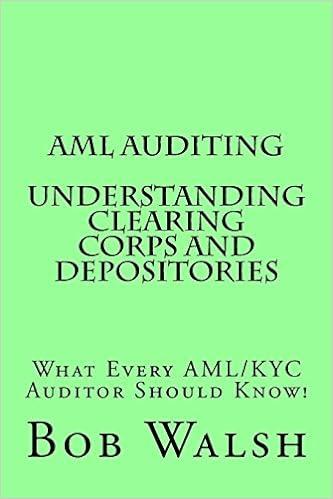Question
This question tells a sad tale of Merrill Lynched, investment bank. Investment banks have a higher maximum asset to equity ratio of 20 (versus the
This question tells a sad tale of Merrill Lynched, investment bank. Investment banks have a higher maximum asset to equity ratio of 20 (versus the 10 requirement imposed on regular banks). This allows them to earn a potentially higher rate of profit and pay higher (uninsured) deposit rates. The initial balance sheet (in millions of dollars) is as follows.

(a) What is bank capital? Does it satisfy the regulation(s)?
(b) Merrill makes a healthy 8% return on both loans and securities (sub-prime mortgages) but only has to pay out 5% to both depositors and bondholders. Merrill pays no taxes because they are very clever. What is Merrills annual net income, ROA and ROE?
(c) Merrill identifies 50 of reserves as excess reserves and decides to lend that out leaving 50 as reserves. How much does this improve the ROE?
Investment banks get the Shrub Administration to raise the maximum equity multiplier to 33. (Continue from part (c)).
(d) Merrill wants to maximize its return on equity and also grow the company by buying more securities by issuing bank bonds; reserves and deposits are the same as before. (Merrill figured this was a safe move because unlike loans, securities are usually liquid, and unlike deposits, bond funding cannot be quickly withdrawn.) Redraw the balance sheet. What is the maximum ROE?
Merrill suffered an electronic bank run on Monstrous Monday Sept 14 in which fearful demand depositors suddenly started withdrawing. Merrill cant sell the loans. The securities, which are sub-prime, receive 10 cents on the dollar in the crisis. (Merrill's can't get a loan from other banks or an Advance from the Fed.)
(e)After what quantity of withdrawals is Merrill insolvent? Redraw The new balance sheet.
(f) Now suppose there are deposit withdrawals of $390 million. What is the loss to bondholders and depositors if Merrill had received regulatory forbearance and continued to payout to all withdrawers by continuing to liquidate securities in insolvency. The loans can be liquated at 80%. Redraw the balance sheet. (In the end, Merrill was bailed out.)
Assets Reserves 100 Loans 800 Securities 400 Deposits Bank Bonds Bank capital Liabilities 1000 200Step by Step Solution
There are 3 Steps involved in it
Step: 1

Get Instant Access to Expert-Tailored Solutions
See step-by-step solutions with expert insights and AI powered tools for academic success
Step: 2

Step: 3

Ace Your Homework with AI
Get the answers you need in no time with our AI-driven, step-by-step assistance
Get Started


